Art & Exhibitions
There’s More to Rome Than Ancient History. Check Out These Must-See Contemporary Gems
All roads lead to Rome. And to Cy Twombly’s former studio and a vibrant array of artist-run spaces and commercial galleries.
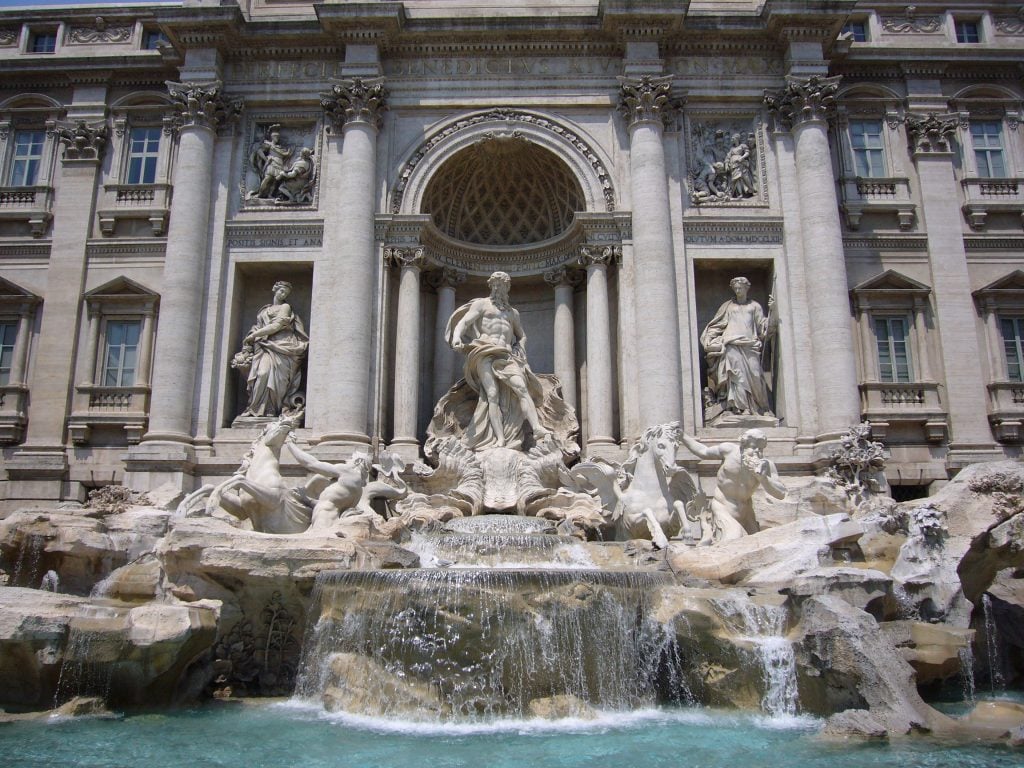
All roads lead to Rome. And to Cy Twombly’s former studio and a vibrant array of artist-run spaces and commercial galleries.

Erica Firpo

“There is nothing more irresistible to an artist than an invitation to come to Italy, and Rome in particular,” Pepi Marchetti Franchi, founding director of Gagosian Rome, tells me. And she’s right. For centuries, the Eternal City has captivated imaginations with its legendary stories of gladiators; its gorgeous cityscape of travertine temples, baroque palaces, and iconic domes; and its unforgettable umbrella pines. Rome is and has been the Grand Tour dream destination; however, with more than 25,000 years of history visible at every turn, the city can feel weighed down by its past, and even with its magnetic pull, “contemporary” has rarely been an adjective associated with Caput Mundi. That’s now changed.
There’s a palpable contemporary art revival in Rome. Over the past two decades, the city has seen the opening of more and more international galleries as well as new museum spaces, and the rise of multidisciplinary foundations and artist-run venues, all within ancient and historic spaces. There is something about the connection between the old and the new that has constantly brought the contemporary art world to Rome—it’s just not always easy to find.
If anything, Rome’s contemporary scene is a solar system of around five constellations: the stalwarts (those reliable spaces that cement the scene), the museums, the archaeological sites, the academies and foundations, and the artist-run spaces.
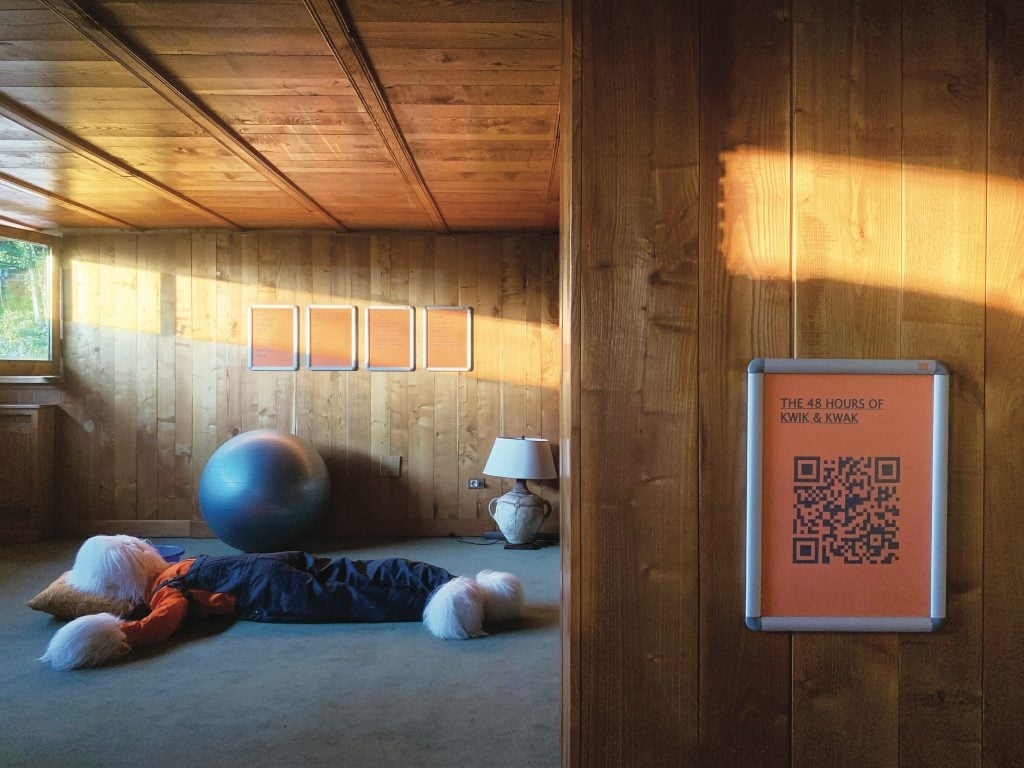
Jos de Gruyter & Harald Thys, The 48 Hours of Kwik & Kwak at Studioli. Courtesy Studioli.
The Stalwarts
MAXXI: Designed by award-winning architect Zaha Hadid, the MAXXI is the contemporary hub in Rome, showcasing a collection of contemporary art and architecture and offering blockbuster exhibitions, educational programs, and public events.
Galleria Lorcan O’Neill: when Lorcan O’Neill opened his eponymous gallery in 2003, he was pioneering a new generation of contemporary spaces, establishing his outpost as the key destination for internationally renowned artists (including Tracey Emin, Anselm Kiefer, and Martin Creed) as well as emerging talents.
Gagosian Rome: opened in 2007, Gagosian is fundamental to the contemporary scene. Housed in a renovated 1920s building designed by Firouz Galdo, Gagosian showcases innovative exhibitions by renowned artists like Giuseppe Penone, Cy Twombly, and Damien Hirst. It is a contemporary art connector, supporting the international art community.
La Galleria Nazionale: The centurion art museum, whose beautiful neoclassical pavilion deserves a mention, was founded to showcase modern Italian art and it has expanded to include work by top international artists. In 2016, its reliable, chronological display had a revamp, thanks to former director Crisiana Collu, and now its hallowed halls exhibition is curated non-chronologically, creating an engaging dialogue between different artistic periods.
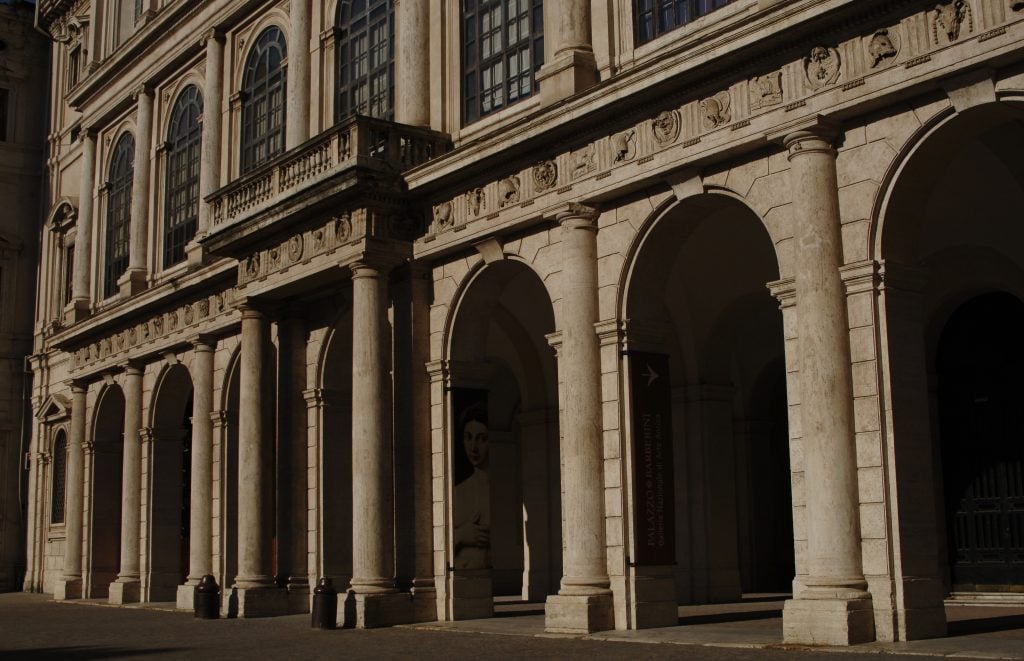
The Galleria Nazionale d’Arte Antica, in the Barberini Palace. Photo: PHAS/Universal Images Group via Getty Images.
Museums and Archaeological Sites
Rome may be best known for its archaeological sites and Baroque museums, but it has a smattering of institutions that highlight Rome’s commitment to the contemporary art dialogue. Along with MAXXI and La Galleria Nazionale, the city hosts several notable contemporary art museums that showcase a wide array of modern artistic expressions. There is the artist-run MACRO (Museum of Contemporary Art of Rome), which is located in a former Peroni beer factory and has an interior cube design by architect Odile Decq. Also worthy of a stop are the niche Museo Carlo Bilotti and Palazzo Merulana.
“Heritage is not something frozen in time, but a contemporary world in another time,” says Marchetti Franci. “It’s amazing to see in recent years how these ‘ancient’ spaces are engaging with contemporary art.”
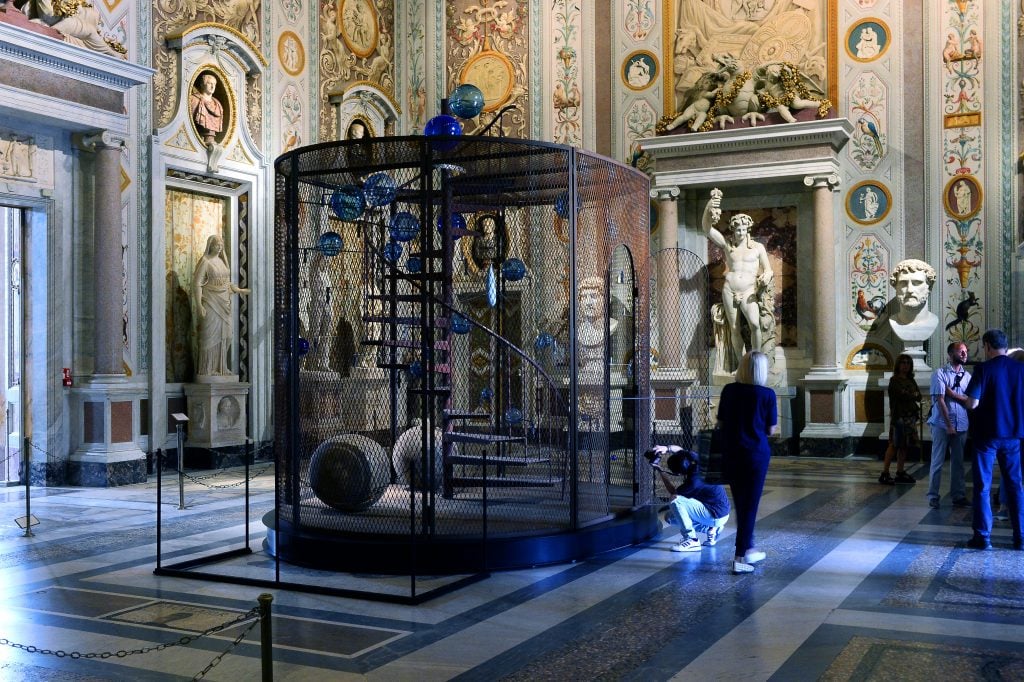
View of the exhibition of Louise Bourgeois’s exhibition “Unconscious Memories” at Galleria Borghese in 2024. Photo: Roberto Serra – Iguana Press/Getty Images.
Just as artists are attracted to history, Rome’s contemporary art scene is embracing its past. Historic and epic spaces, ancient bath complexes, marketplaces, and temples become more than just backdrop; they are part of a tableau of contemporary exhibitions, from blockbusters featuring Arte Povera artist Giuseppe Penone at the Baths of Caracalla to Ai Weiwei and Elisabetta Benassi at the Baths of Diocletian.
Museum spaces like the Galleria Borghese have also shifted to contemporary art in their programming. That venue’s current Louise Bourgeois show, the first dedicated to a woman contemporary artist there, has received critical acclaim. At the Galleria Barberini are works from the esteemed Lebanon-based Aïshti Foundation, headed by collectors Tony and Elham Salamé.
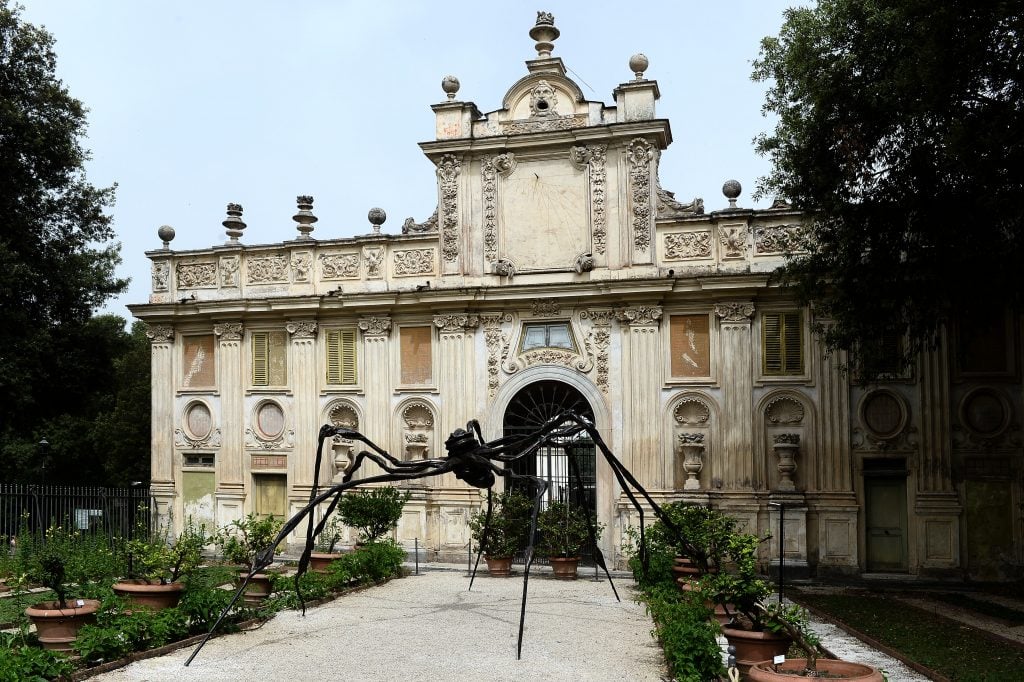
Louise Bourgeois, “Unconscious Memories,” at Galleria Borghese. Photo: Roberto Serra – Iguana Press/Getty Images.
The Academies and Foundations
As a capital city, Rome is in the unique position of having more than just national museums and international galleries. It has a community of state-funded academies that promote artistic creation and research through robust residency programs. Some of these academies have been around for centuries; most famous among them is the Villa Medici, home to the French Academy in Rome. There is also the historic British School and the American Academy, while others are just a few decades old. Though many were founded on the classics, in recent years, under the helm of cutting-edge directors, these academies have infused their programming with contemporary art—from open studies to site-specific exhibitions.
“Rome has been experiencing a Renaissance from the point of view of contemporary art,” comments Corinna Turati, an independent art professional. “More and more international galleries, foundations, [and cultural centers] are opening in Rome.”
Foundations like Forof, created by Giovanna Caruso Fendi, aimed at creating a dialogue with archeology through its location in the ancient Basilica Ulpia. Giovanna is the daughter of Alda Fendi, one of fashion’s five Fendi sisters. Alda herself has also been integral to Rome’s contemporary art scene with Sperimenti Fondazione Aldi Fendi, a multidisciplinary arts foundation, now located in Rhinoceros space. For its part, Forof is providing experimental situations for contemporary artists.
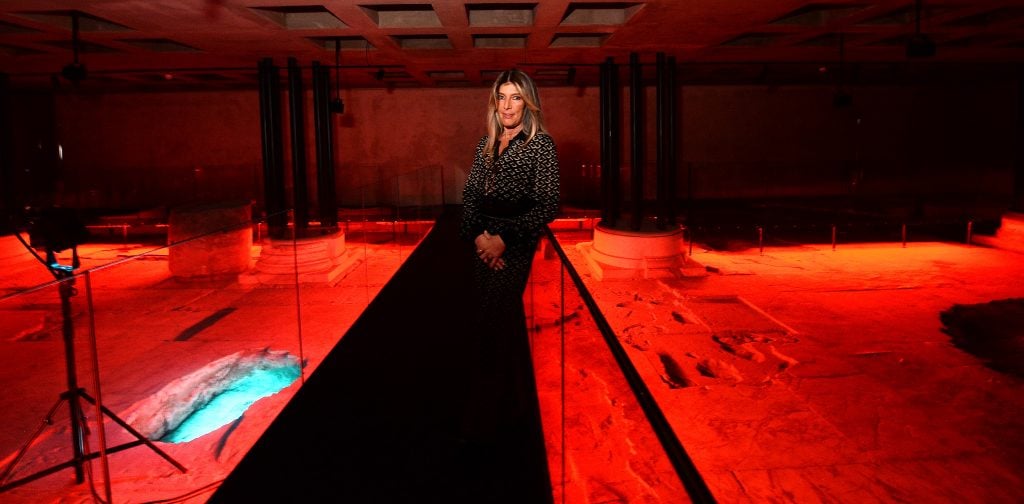
Italian businesswoman Giovanna Caruso Fendi attends the presentation of her FOROF Archaeological, Contemporary Art and Sperimental Arts Center at Palazzo Gallo di Roccagiovine on January 27, 2022 in Rome, Italy. Photo: Roberto Serra – Iguana Press/Getty Images
Others, like Fondazione Pastificio Cerere (in a former pasta factory) and Fondazione Giuliani, are redefining context and location, bringing innovative shows to out-of-the-center locations.
The Artists’ Spaces
Less on the radar are artist-run spaces; harder to find and often by appointment only, spaces Studioli, Sic12, and Supernova play a crucial role in the city’s contemporary art scene, fostering creativity and innovation outside the traditional gallery system.
“These are independent venues and studio spaces that provide a platform for experimentation and collaboration vital to the grassroots artistic community,” explains Shara Wasserman, art historian, curator and director of Temple University Rome’s Gallery of Art. In September 2024, the gallery moves to a new home just off Piazza di Spagna, with a curatorial program focusing on international artists and Italian designers, as well as student shows.
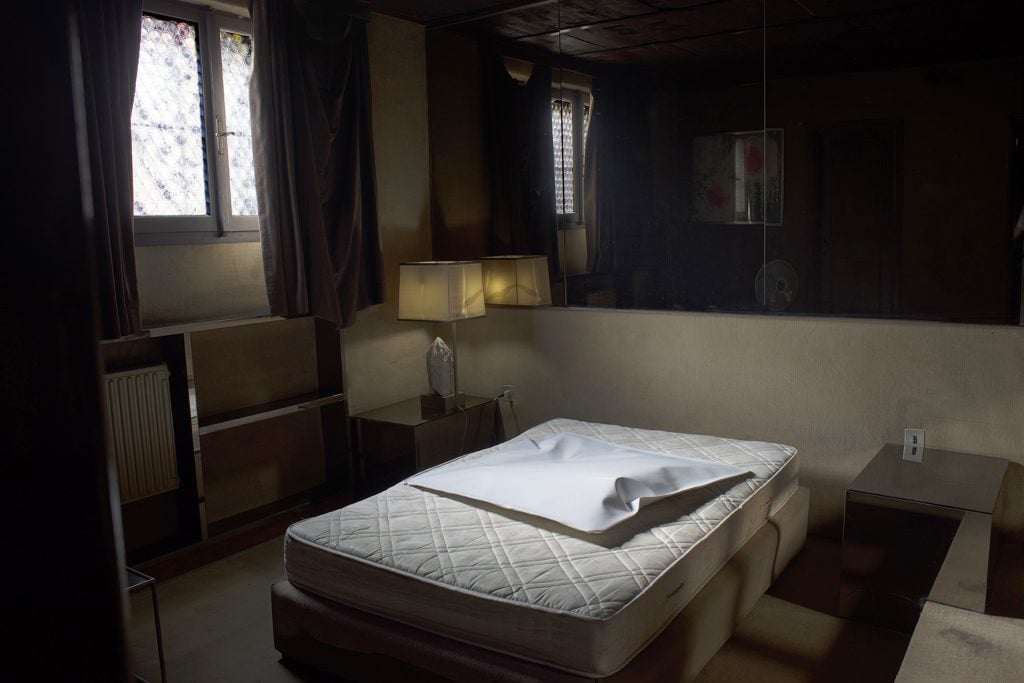
Studioli, Thomas Hutton. Courtesy Studioli, Rome
The Galleries
Rome had its epiphany in the early 2000s when galleries like Lorcan O’Neill and, a bit later on, Gavin Brown’s Roma Roma Roma launched as did Gagosian. Brown shuttered Roma Roma Roma, only to open Sant’Andrea de Scaphis, an evocative art space in a deconsecrated 9th-century church, a few years later, and then came the deluge of galleries.
“All roads lead to Rome and people are always coming to Rome,” says Isabella Tucci, associate gallery director at Amanita. “If you look around and start engaging with the academies, with the artists, and with the galleries, you see that things are actually happening.”
Tucci cites Baleno International as one of her go-to spots for its daring and continuously exciting program, as well as galleries Tim Van Laere and Ermes Ermes for “rekindling the circuit in the historic center.” Wasserman and Turati add recent favorites: Z20 Sara Zanin, Richard Saltoun, and Galleria Continua, the pioneering San Gimignano gallery which opened a branch inside the St Regis Hotel in 2020.
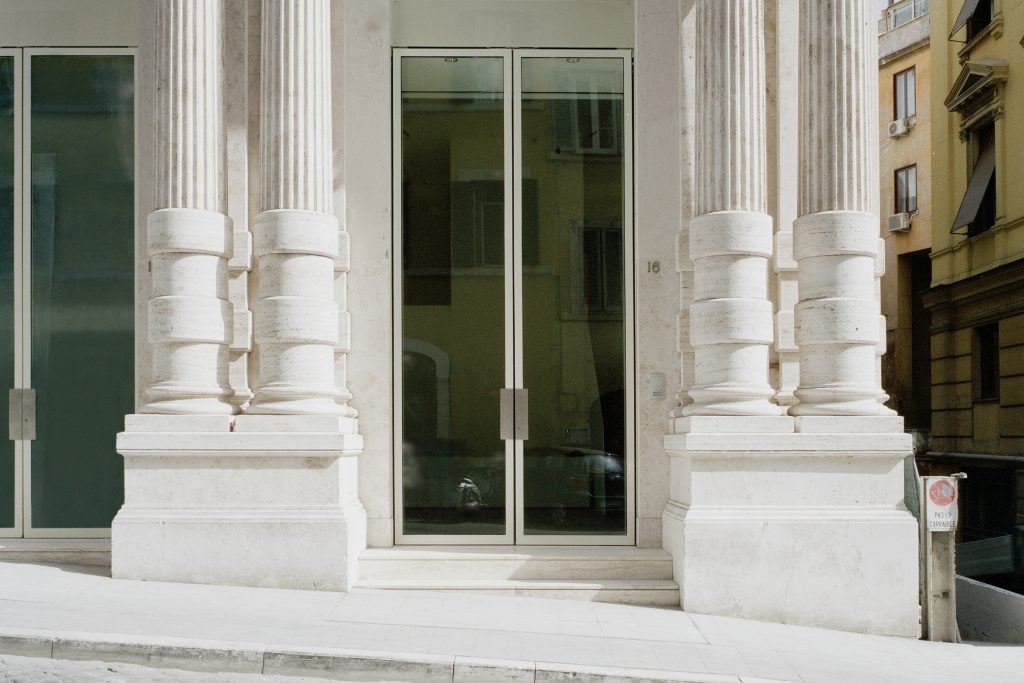
Gagosian Rome. Courtesy Gagosian
For something slightly off-beat and out of the way, there’s the newly opened Fondazione Iris. Located in Bassano in Teverina (about an hour north of Rome), Iris is Amanita’s countryside counterpart, and it has a spectacular back story. The restored 17th-century palace was Cy Twombly’s studio from 1975 through 2008; the artist’s grandson, Caio, is one of the founders of Amanita.
“Contemporary Rome is spread out in more experimental situations, and across the greater city,” says Marchetti Franchi. “Artists want to be here.” Now is the time.